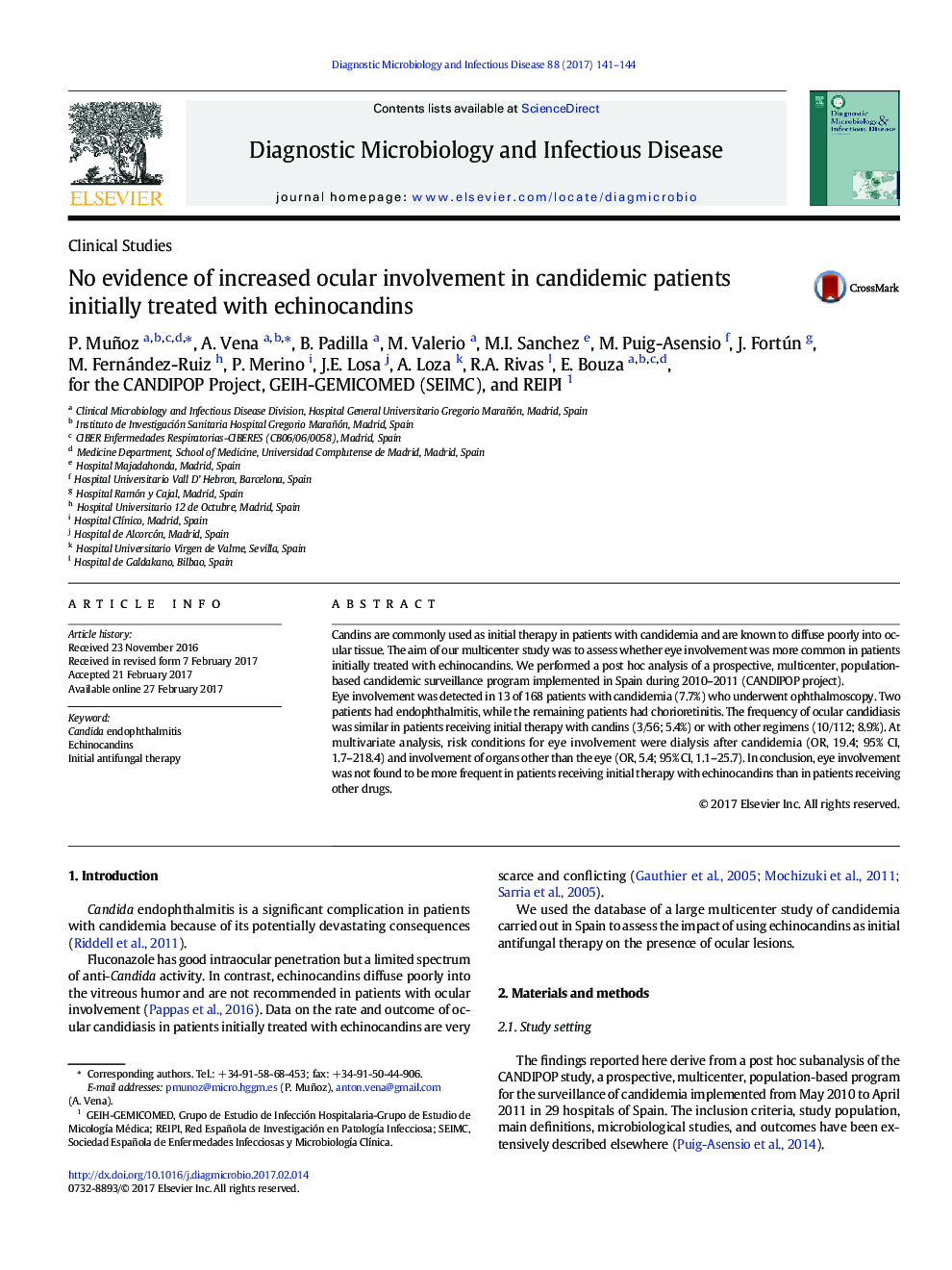| Article ID | Journal | Published Year | Pages | File Type |
|---|---|---|---|---|
| 5665845 | Diagnostic Microbiology and Infectious Disease | 2017 | 4 Pages |
â¢Candida endophthalmitis is a significant complication in patients with candidemia.â¢Candins are commonly used as initial therapy in patients with candidemia.â¢Candins diffuse poorly in the eye.â¢Eye involvement was not more frequent in patients receiving initial echinocandins.
Candins are commonly used as initial therapy in patients with candidemia and are known to diffuse poorly into ocular tissue. The aim of our multicenter study was to assess whether eye involvement was more common in patients initially treated with echinocandins. We performed a post hoc analysis of a prospective, multicenter, population-based candidemic surveillance program implemented in Spain during 2010-2011 (CANDIPOP project).Eye involvement was detected in 13 of 168 patients with candidemia (7.7%) who underwent ophthalmoscopy. Two patients had endophthalmitis, while the remaining patients had chorioretinitis. The frequency of ocular candidiasis was similar in patients receiving initial therapy with candins (3/56; 5.4%) or with other regimens (10/112; 8.9%). At multivariate analysis, risk conditions for eye involvement were dialysis after candidemia (OR, 19.4; 95% CI, 1.7-218.4) and involvement of organs other than the eye (OR, 5.4; 95% CI, 1.1-25.7). In conclusion, eye involvement was not found to be more frequent in patients receiving initial therapy with echinocandins than in patients receiving other drugs.
